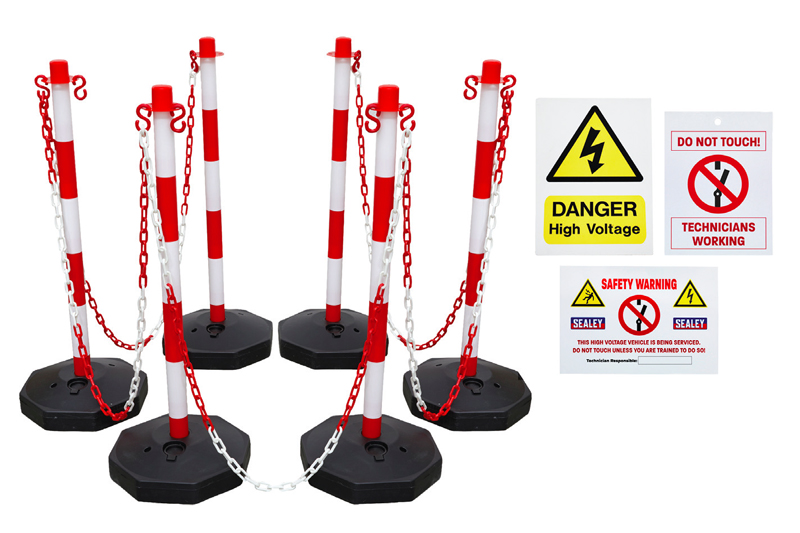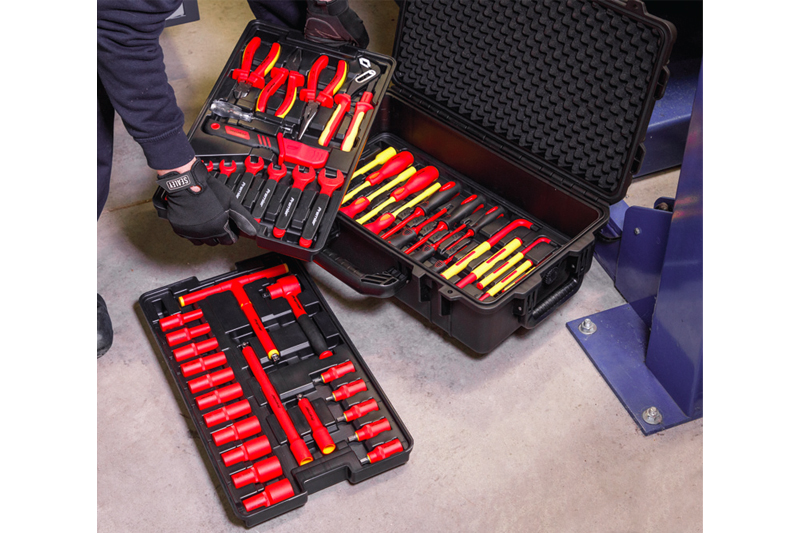
Tool specialist Sealey offers PMM readers its top tips on working efficiently and safely on electric vehicles.
As the electric vehicle market experiences unprecedented growth, with pure electric cars seeing the biggest increase in new-car registrations in the UK during July 2023, accounting for 16 per cent of the market share, it has never been more important to invest in appropriate tools and training.
The latest statistics from the SMMT further support this, predicting that by the year’s end, a new battery electric vehicle (BEV) will be registered every 50 seconds, and this rate is expected to increase to one in every 40 by 2024.
Changing landscape
The surge in EV popularity is a testament to the shifting landscape of the automotive industry. With concerns over climate change and the need to reduce greenhouse gas emissions, electric vehicles have emerged as a pivotal solution. Governments worldwide are introducing aggressive policies to encourage EV adoption, offering incentives and imposing stricter emission standards. As a result, consumers are increasingly turning to electric cars, and this trend is set to accelerate.

In this rapidly evolving EV landscape, the role of electric vehicle servicing tools and training cannot be underestimated. Here’s why they are crucial for both automotive professionals and the industry as a whole.
Safety First
Safety is paramount when working with high-voltage EV systems. Tools and training equip technicians with the expertise to handle electric vehicles safely as they learn how to identify potential hazards, follow strict safety protocols, and use specialized personal protective equipment (PPE) to minimise risks.
Sealey continually strive to develop new and innovative tools and equipment designed to keep technicians safe whilst servicing these vehicles. Products include high-voltage electrician’s gloves, an electrician’s safety mat, and a highvoltage rescue pole.

Compliance with regulations
As the EV market grows, governments are implementing regulations to ensure the safety and quality of servicing. Technicians who have received proper training and use approved tools are more likely to comply with these regulations, avoiding legal complications and safeguarding their reputation. Any vehicle being worked on should be placed in an exclusion zone to create a secure working environment. The HP55K1COMBO is ideal for this purpose, as the post and chain kit and high voltage warning signs notify others of the potential danger, preventing them from entering the work area.
Staying competitive
The automotive industry is evolving rapidly, and those who adapt to new technologies are more likely to thrive. By investing in electric vehicle servicing tools and training, automotive professionals can position themselves as leaders in the market, attracting a growing customer base and staying competitive in the long run.
When working on hybrid or electric vehicle systems, a category III analyser or voltmeter is vital. The circuitry inside the unit is built specifically to safely cope with the high voltages and currents found in this type of vehicle. Sealey’s TA320 is category III and conforms to EN61010. For further protection from the risk of electric shock, VDE-approved tools must be used. The company supplies a wide range of tools insulated to VDE and EN 60900 standards, including the comprehensive AK7938 3/8 in. Sq drive and AK7939 ½ in. Sq drive tool kits.

Creating a better environment
Beyond the economic and safety benefits, servicing electric vehicles contributes to environmental sustainability. As more vehicles transition to electric power, proper maintenance and repair ensures that these vehicles remain on the road longer, reducing the need for new manufacturing and the overall impact.
The burgeoning electric vehicle market demands a proactive approach from automotive professionals. With electric cars becoming increasingly popular, investing in the right tools and training is essential for ensuring the safety and success of technicians and the industry as a whole. As the EVs increase, embracing these changes is not only responsible but also a strategic move for those in the automotive service sector.









